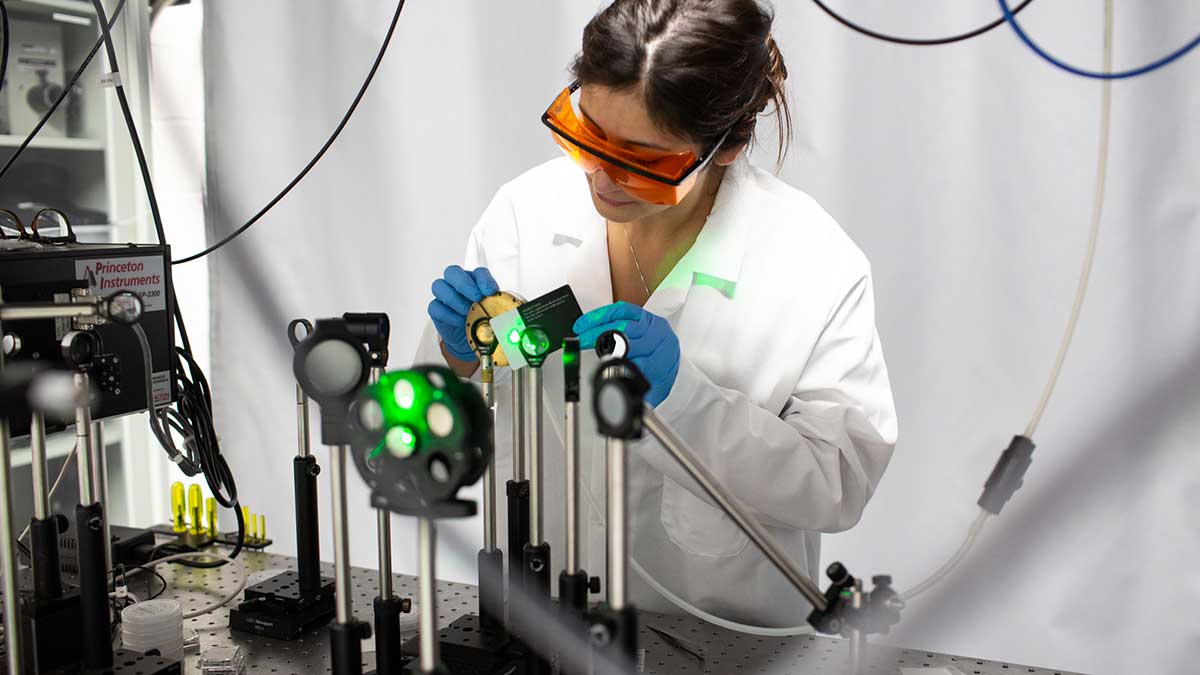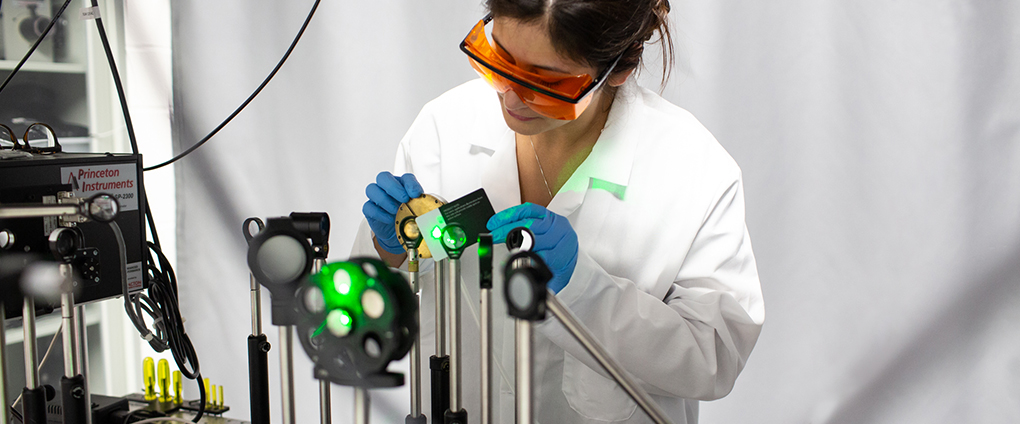The Quantum Revolution

The Quantum Revolution
- RIT/
- College of Science/
- Research/
- The Quantum Revolution
Quantum science and technologies are on the verge of enabling various transformational technologies, and RIT researchers have been working at the intersection of photonics and quantum technology for years.
Condensed Matter and Materials Physics

Physics research in condensed matter and materials encompasses theory and experiment. Theorists utilize electronic structure calculations, molecular dynamics simulations, and kinetic Monte Carlo modeling to study and design oxides, metals, and alloys at various length and time scales. Experimentalists are focused on the study of metals, oxides, surfaces, and magnetic systems through x-ray scattering techniques such as coherent scattering and surface diffraction, as well as imaging techniques such as atomic force microscopy.
College of Science
Materials Science and Engineering
Materials Scientists use the principles of chemistry, physics, and engineering to create and characterize new materials. They study the behavior of materials under stress, including physical strain and corrosion. They create new materials with unique properties, including renewable resources. They create new types of metals, ceramics, glass and polymers, including biomaterials and nanomaterials. Materials Scientists also build devices that contribute solutions to our energy challenges, such as organic photovoltaic solar cells.
Quantum Optics
Current optics research in RIT Physics consists of a combination of theory and experiments. Theorists are focused on characterizing silicon nano-photonic networks and exploring quantum sensing and mesoscopic quantum physics. Experimentalists are currently investigating problems in integrated photonics and imaging, including the quantification of entanglement for the purposes of computing, simulation, and secure communication.
Organic Photovoltaics
Organic photovoltaic devices (OPV) provide an option for low-cost, flexible, and non-toxic (no lead or cadmium) renewable energy. Organic materials can be modified to increase light absorption, energy transfer, and conductivity and to reduce costs of manufacture. The molecular structure can be changed for aesthetically pleasing colors and artistic design, with devices being semitransparent or transparent, valuable for building integration or in applications such as smart windows. Furthermore, a growing number of exciting new polymer donors and non-fullerene molecular acceptors has spearheaded a major resurgence in OPV in recent years.
OPV research provides a wonderful intersection point between synthetic chemistry, predictive computational materials design, and the physical chemistry that is used to describe the mechanism of operation.
Scattering and Spectroscopy
Physics faculty engaged in research on the atomic and nanoscale structure and dynamics, at a variety of length and time scales, utilize and further develop x-ray, neutron, and laser light techniques and instrumentation. In addition to x-ray scattering/spectroscopy from surfaces and laser scattering from particulate or structured solutions performed at RIT, x-ray experiments are performed at national synchrotron facilities and neutron experiments take place using instruments at national spallation and reactor sources. RIT physics faculty are also developing a new spin-polarized neutron scattering technique and instrument in which the spin polarizations of sample target nuclei are selectively manipulated using nuclear magnetic resonance techniques.
College of Science


















